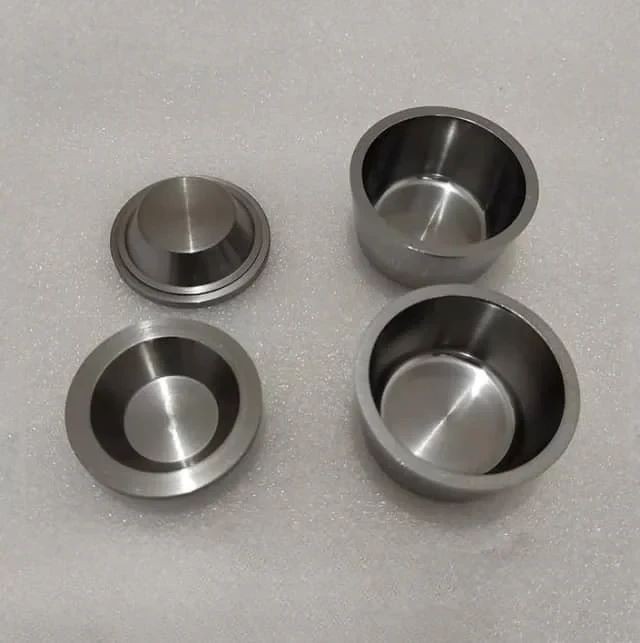
Thin Film Deposition Parts
Electron Beam Evaporation Coating Tungsten Crucible and Molybdenum Crucible for High Temperature Applications
Item Number : KMS04
Price varies based on specs and customizations
- Material
- Molybdenum / Tungsten
- Specification
- 30-50mm*15-25mm
Shipping:
Contact us to get shipping details Enjoy On-time Dispatch Guarantee.
Why Choose Us
Reliable PartnerEasy ordering process, quality products, and dedicated support for your business success.
Application
Electron beam evaporation (EBE) is a physical vapor deposition (PVD) technique for thin film deposition. In EBE, a beam of high-energy electrons is used to heat and vaporize a solid material, which then condenses onto a substrate to form a thin film. Tungsten and molybdenum crucibles are commonly used in electron beam evaporation processes due to their excellent thermal and mechanical properties. Tungsten/Molybdenum crucibles are commonly used for thin film deposition in the production of microelectronics, such as integrated circuits (ICs) and microprocessors; optical coating processes, to deposit thin films onto lenses, mirrors or other optical components; are thin-film depositions for anti-reflective coatings or conductive layers;Wear-resistant coatings: Tungsten crucibles can be used to deposit wear-resistant coatings on various components, such as cutting tools or engine parts, etc.
Detail & Parts

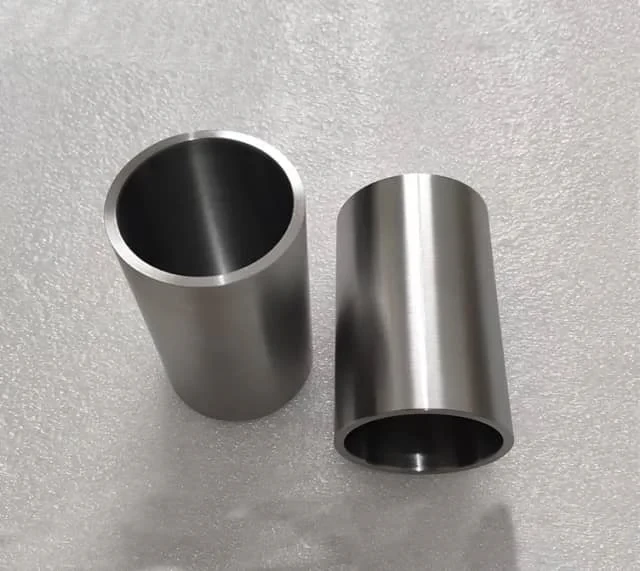
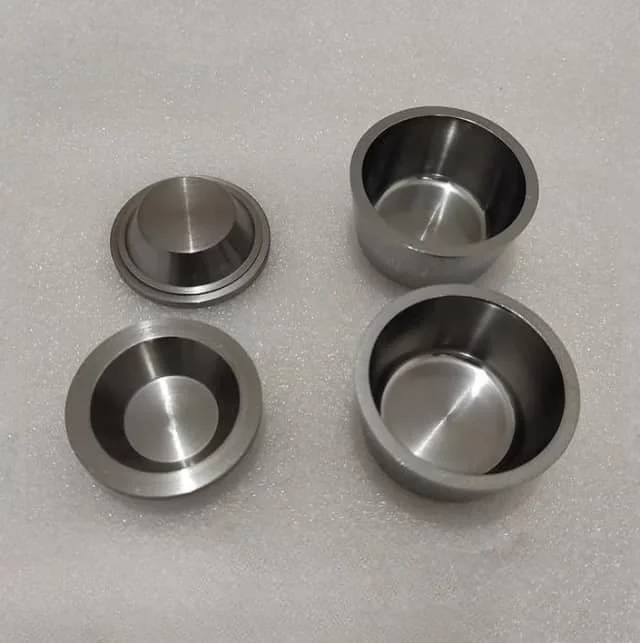
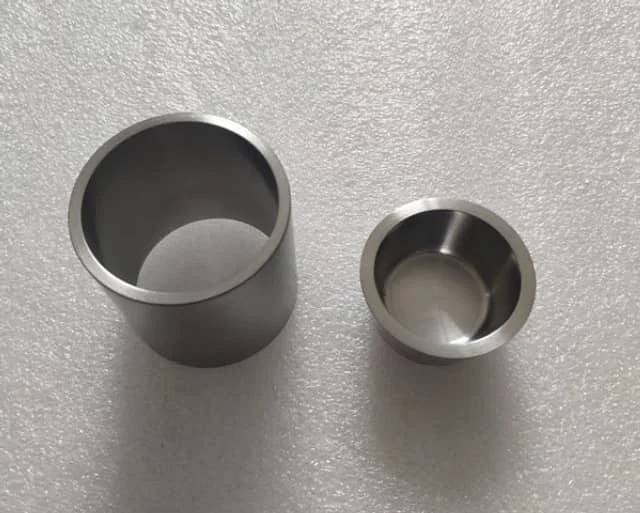

Technical specifications
| Outer diameter & High | 30*15mm | 34*20mm | 35*17mm | 40*17mm | 42*19mm | 45*22mm | 50mm*22 |
The crucibles we show are available in different sizes and custom sizes are available on request.
Advantages
- Very high melting point; suitable for processing high melting point materials. High thermal conductivity for efficient heat transfer during evaporation.
- High purity; using a tungsten crucible helps ensure the purity of the deposited film.
- High mechanical strength; Tungsten is known for its excellent mechanical strength and resistance to deformation at high temperatures.
- Low Vapor Pressure; Tungsten has a low vapor pressure that helps minimize contamination and maintain a clean vacuum environment during evaporation.
FAQ
What Are Thermal Evaporation Sources?
What Are The Main Types Of Thermal Evaporation Sources?
How Do Thermal Evaporation Sources Work?
What Are The Common Materials Used For Evaporating Crucibles?
What Are The Advantages Of Using Thermal Evaporation Sources?
What Are The Advantages Of Using Evaporating Crucibles?
What Applications Are Thermal Evaporation Sources Used For?
How Should Evaporating Crucibles Be Handled And Maintained?
4.8
out of
5
Electron beam evaporation coating made simple and efficient with Kintek Solution's tools.
4.9
out of
5
Kintek Solution's crucibles have taken our manufacturing process to the next level. The quality and durability are second to none.
4.7
out of
5
The expertise of Kintek Solution in electron beam evaporation coating is evident in their outstanding products.
4.8
out of
5
Kintek Solution's crucibles have revolutionized our thin film deposition process, delivering exceptional results.
4.7
out of
5
Kintek Solution has set a new standard for electron beam evaporation coating. Their products are a testament to their commitment to quality.
4.9
out of
5
Kintek Solution's crucibles have accelerated our manufacturing process, enabling us to meet increasing demands efficiently.
4.6
out of
5
Kintek Solution's electron beam evaporation coating solution has transformed our manufacturing process, delivering exceptional results.
4.7
out of
5
Kintek Solution's crucibles have exceeded our expectations, providing superior outcomes in our electron beam evaporation process.
4.8
out of
5
Kintek Solution's electron beam evaporation coating products are a game-changer, delivering precision and reliability.
REQUEST A QUOTE
Our professional team will reply to you within one business day. Please feel free to contact us!
Related Products

Thermally Evaporated Tungsten Wire for High Temperature Applications
It has a high melting point, thermal and electrical conductivity, and corrosion resistance. It is a valuable material for high temperature, vacuum and other industries.

Tungsten Evaporation Boat for Thin Film Deposition
Learn about tungsten boats, also known as evaporated or coated tungsten boats. With a high tungsten content of 99.95%, these boats are ideal for high-temperature environments and widely used in various industries. Discover their properties and applications here.

Electron Beam Evaporation Coating Gold Plating Tungsten Molybdenum Crucible for Evaporation
These crucibles act as containers for the gold material evaporated by the electron evaporation beam while precisely directing the electron beam for precise deposition.

High Purity Pure Graphite Crucible for Evaporation
Vessels for high temperature applications, where materials are kept at extremely high temperatures to evaporate, allowing thin films to be deposited on substrates.

High Purity Pure Graphite Crucible for Electron Beam Evaporation
A technology mainly used in the field of power electronics. It is a graphite film made of carbon source material by material deposition using electron beam technology.

Electron Beam Evaporation Coating Conductive Boron Nitride Crucible BN Crucible
High-purity and smooth conductive boron nitride crucible for electron beam evaporation coating, with high temperature and thermal cycling performance.

Custom Boron Nitride (BN) Ceramic Parts
Boron nitride (BN) ceramics can have different shapes, so they can be manufactured to generate high temperature, high pressure, insulation and heat dissipation to avoid neutron radiation.

Advanced Engineering Fine Ceramics Boron Nitride (BN) Ceramic Parts
Boron nitride ((BN) is a compound with high melting point, high hardness, high thermal conductivity and high electrical resistivity. Its crystal structure is similar to graphene and harder than diamond.

Electron Beam Evaporation Coating Oxygen-Free Copper Crucible and Evaporation Boat
Electron Beam Evaporation Coating Oxygen-Free Copper Crucible enables precise co-deposition of various materials. Its controlled temperature and water-cooled design ensure pure and efficient thin film deposition.

Hexagonal Boron Nitride HBN Ceramic Ring
Boron nitride ceramic (BN) rings are commonly used in high temperature applications such as furnace fixtures, heat exchangers and semiconductor processing.
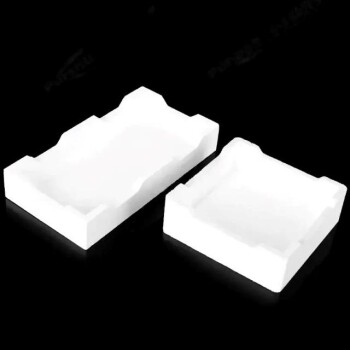
Advanced Engineering Fine Ceramics Alumina Ceramic Saggar for Fine Corundum
Alumina sagger products have the characteristics of high temperature resistance, good thermal shock stability, small expansion coefficient, anti-stripping, and good anti-powdering performance.

Hemispherical Bottom Tungsten Molybdenum Evaporation Boat
Used for gold plating, silver plating, platinum, palladium, suitable for a small amount of thin film materials. Reduce the waste of film materials and reduce heat dissipation.
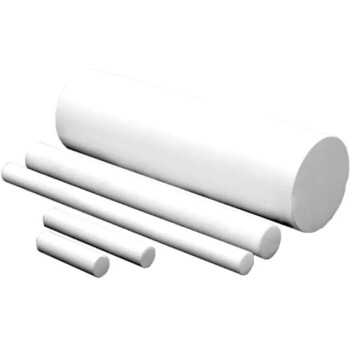
Boron Nitride (BN) Ceramic Rod for High Temperature Applications
Boron nitride (BN) rod is the strongest boron nitride crystal form like graphite, which has excellent electrical insulation, chemical stability and dielectric properties.

Graphite Vacuum Furnace High Thermal Conductivity Film Graphitization Furnace
The high thermal conductivity film graphitization furnace has uniform temperature, low energy consumption and can operate continuously.

Efficient and reliable, KinTek KHB Heating Circulator is perfect for your lab needs. With a max. heating temperature of up to 300℃, it features accurate temperature control and fast heating.

Zirconia Ceramic Gasket Insulating Engineering Advanced Fine Ceramics
Zirconia insulating ceramic gasket has high melting point, high resistivity, low thermal expansion coefficient and other properties, making it an important high temperature resistant material, ceramic insulating material and ceramic sunscreen material.

High Temperature Alumina (Al2O3) Furnace Tube for Engineering Advanced Fine Ceramics
High temperature alumina furnace tube combines the advantages of high hardness of alumina, good chemical inertness and steel, and has excellent wear resistance, thermal shock resistance and mechanical shock resistance.

High Temperature Resistant Optical Quartz Glass Sheet
Discover the power of optical glass sheets for precise light manipulation in telecommunications, astronomy, and beyond. Unlock advancements in optical technology with exceptional clarity and tailored refractive properties.

1400℃ Laboratory High Temperature Tube Furnace with Alumina Tube
Looking for a tube furnace for high-temperature applications? Our 1400℃ Tube Furnace with Alumina Tube is perfect for research and industrial use.
Related Articles

Exploring the Benefits of Using Tungsten for Furnace Heating
Tungsten has a number of properties that make it well-suited for use in high-temperature furnaces.

A Comparative Study of Evaporation and Sputtering Techniques in Thin Film Deposition
The two most common techniques used for thin film deposition are evaporation and sputtering.

Electron Beam Evaporation Coating Technology and Material Selection
An in-depth look at the principles and applications of electron beam evaporation coating technology, including material selection and various fields of application.

Electron Beam Evaporation Technology in Vacuum Coating
An in-depth look at electron beam evaporation, its types, advantages, and disadvantages in vacuum coating processes.

Electron Beam Evaporation Coating: Principles, Characteristics, and Applications
An in-depth analysis of electron beam evaporation coating technology, its advantages, disadvantages, and applications in thin film manufacturing.

Electron Beam Evaporation Coating: Advantages, Disadvantages, and Applications
An in-depth look at the pros and cons of electron beam evaporation coating and its various applications in industries.

Vacuum Melting Furnace: A Comprehensive Guide to Vacuum Induction Melting
Discover the intricacies of vacuum induction melting furnaces, their components, operation, advantages, and applications. Explore how these furnaces revolutionize metal processing and achieve exceptional material properties.

Electron Beam Evaporation: Advanced Thin Film Creation
Explores the technology and applications of electron beam evaporation in thin film production.

Challenges in the Development and Application of Tantalum in Vacuum Deposition Equipment
This article discusses the role of tantalum in vacuum deposition equipment, focusing on its properties, manufacturing challenges, and its critical applications in industries like OLED screen production.

Selecting Vacuum Coating Materials: Key Factors and Considerations
Guidelines on choosing the right vacuum coating materials based on application, material properties, deposition methods, economy, substrate compatibility, and safety.

Comprehensive Overview of Vacuum Evaporation Systems
An in-depth look at vacuum evaporation systems, their principles, components, and applications.

Types of Evaporation Sources for Evaporative Coating
Explore different evaporation sources used in thin film deposition, including filaments, crucibles, and evaporation boats.